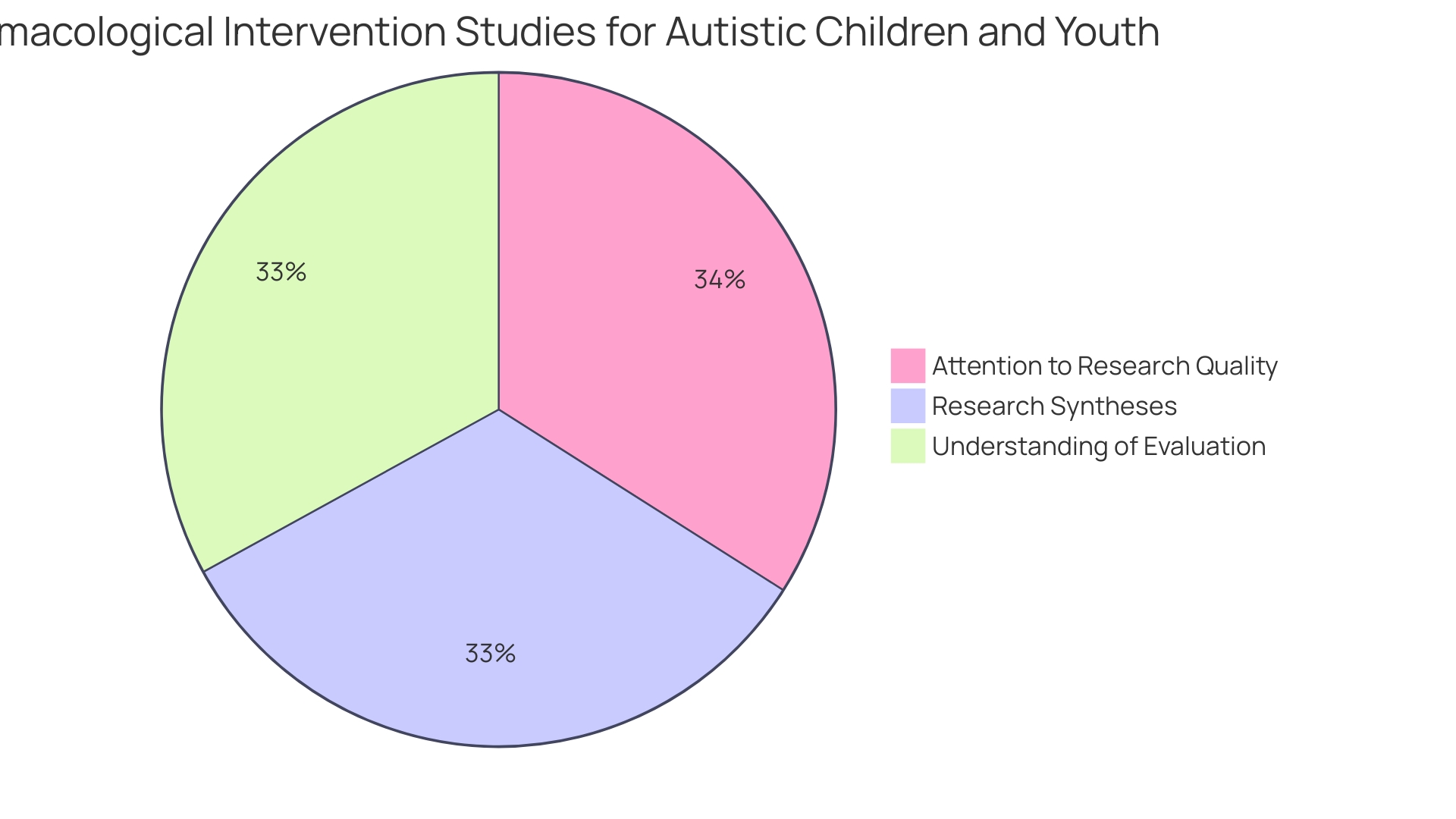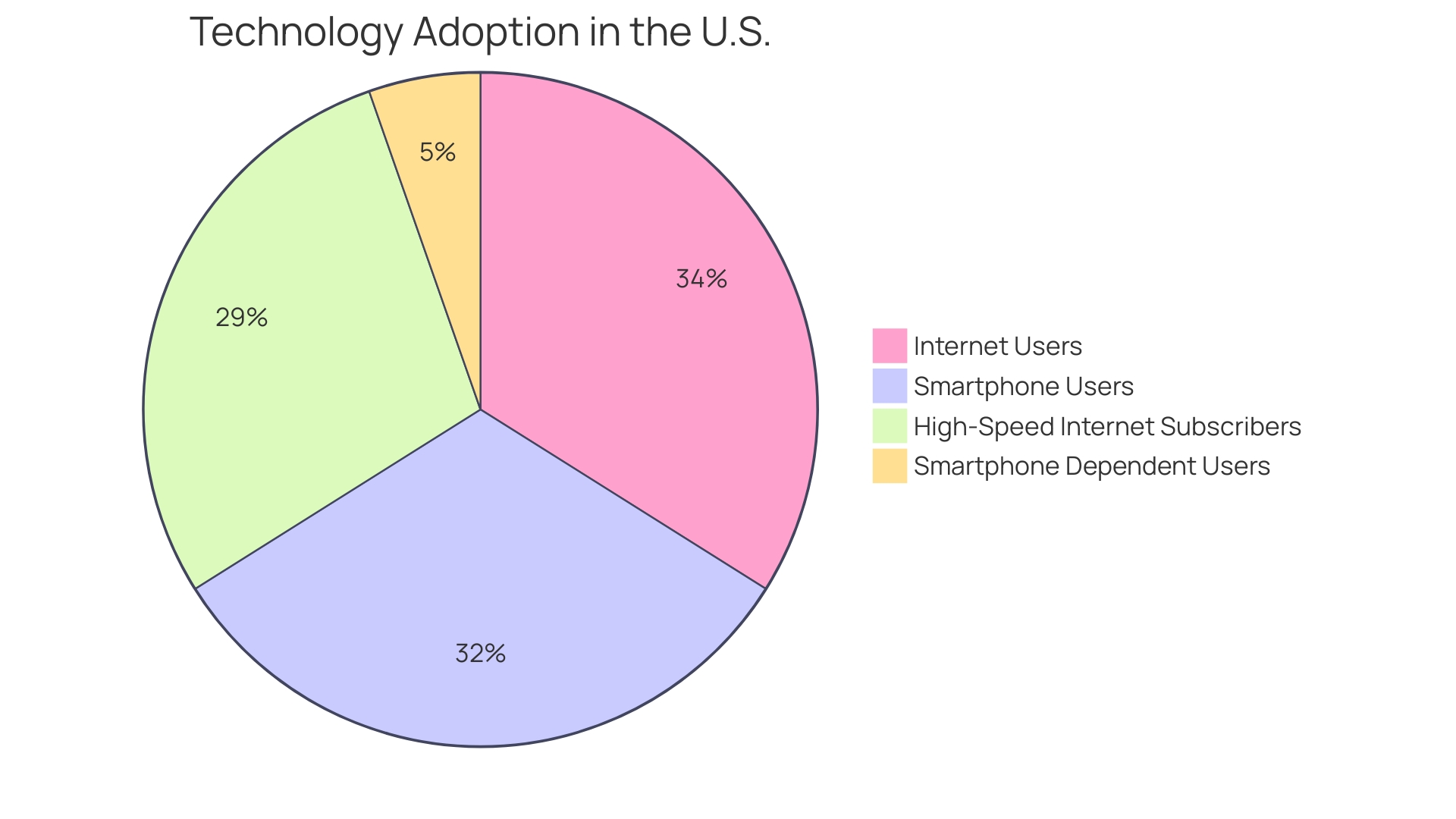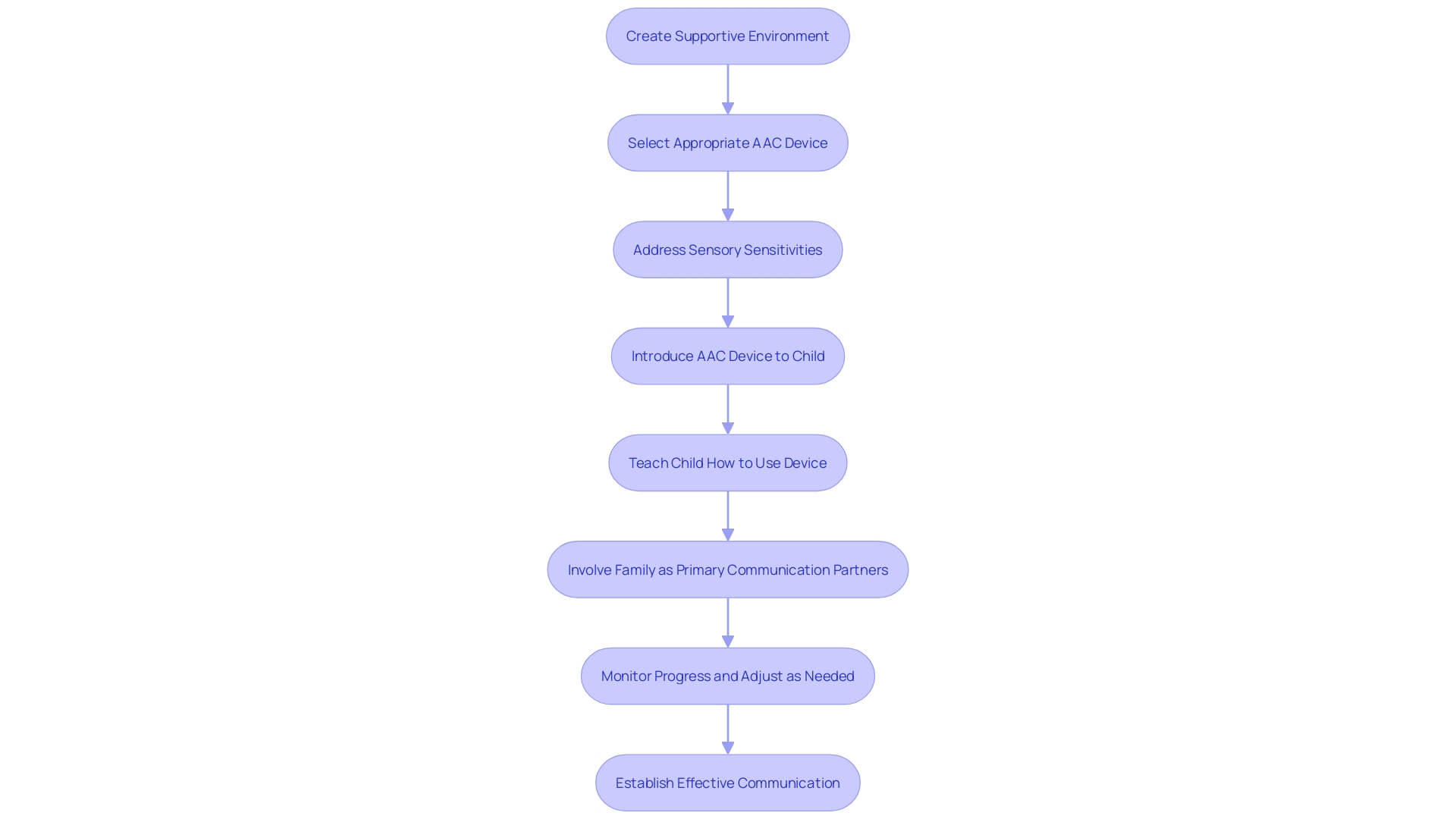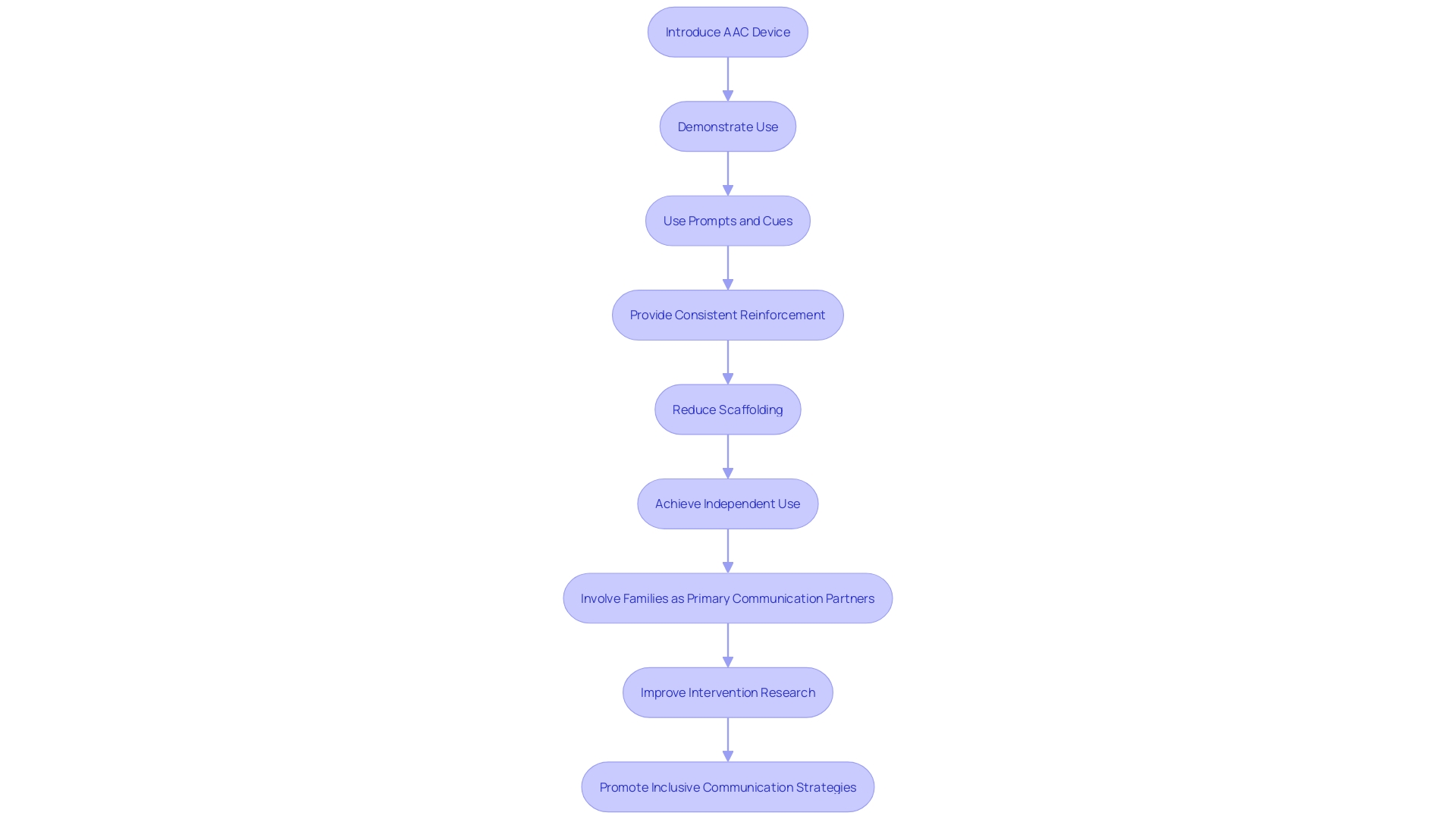Introduction
Augmentative and Alternative Communication (AAC) devices have revolutionized the way individuals with autism interact with the world, offering them a voice when traditional speech is not an option. These devices encompass various tools and strategies designed to enhance communication and empower individuals with autism to convey their thoughts and needs effectively. From low-tech systems like picture boards to high-tech speech-generating devices, AAC devices cater to diverse communication requirements and preferences.
One of the fascinating aspects of AAC is its ability to address nuanced challenges faced by individuals with autism, such as the need for genuine expression of emotions. Unlike simply imitating facial expressions, AAC devices aid in the authentic expression of a wide spectrum of emotions, aligning with comprehensive models of emotions. These communication tools not only transform the lives of the individual users but also deeply impact their families, who often serve as primary communication partners.
As we embrace advancements in assistive technology, such as AR applications and text-to-talk software, the potential for AAC devices to foster autonomy and self-expression broadens. These devices provide a lifeline for individuals with autism, empowering them to navigate communication complexities and engage more fully in daily life. By embracing inclusive design and investing in disability-focused technologies, we can ensure the continued growth and effectiveness of AAC devices, creating a more inclusive and communicative society for all.
What is Augmentative and Alternative Communication (AAC)?
Augmentative and Alternative Communication (AAC) encompasses various tools and strategies that serve as a lifeline for individuals with autism, facilitating their ability to convey thoughts and needs. AAC devices are ingeniously crafted to either enhance or provide alternative means to verbal speech. Through these devices, individuals with autism can navigate the complexities of communication with greater ease and efficacy.
One of the intriguing aspects of AAC is its ability to address the nuanced challenges faced by individuals with autism, such as the need for 'emotion production' rather than just 'emotion mimicry.' Unlike simply imitating facial expressions, AAC devices can aid in the genuine expression of a wide spectrum of emotions, from happiness to surprise, aligning with the comprehensive models of emotions like the Wheel of Emotions that delineate primary and secondary emotions.
These communication tools are not only transformative for the individual user but also deeply impact their families, who often serve as primary communication partners. It's crucial for families to have robust support in this partnership as they are integral to the user's communication environment, given that children spend a substantial portion of their waking lives at home.
Statistics underscore the importance of high-quality interventions for children and youth with autism, highlighting that the majority of research on such interventions suffers from design flaws. This emphasizes the need for meticulous evaluation of AAC interventions to ensure they are effective, beneficial, and respectful toward the individuals they serve. With the advent of technologies like AR applications that translate tactile sensations into visual and auditory signals, AAC devices are becoming even more tailored to the unique sensory preferences of individuals with autism.
The evolution of assistive technology has seen mainstream technologies like text-to-talk software and voice-activated assistants become vital tools for independence, showcasing the immense potential of AAC devices. As we witness continuous advancements in this field, the horizon for individuals with autism to live more autonomously and expressively broadens, echoing the sentiments of innovators who strive to make 'the race fair' for all children, including those with disabilities.

Types of AAC Devices
Augmentative and Alternative Communication (AAC) devices span a broad range of technologies designed to aid those with communication challenges, such as individuals on the autism spectrum. These devices fall into three distinct categories, each tailored to accommodate varying communicative requirements and preferences.
Low-tech AAC systems are the simplest form of support and are often non-electronic. These may include picture boards or communication books, enabling users to convey messages through pointing or gazing at symbols or images. This tactile and visual form of communication is critical for those who need a robust and portable way to express themselves without the necessity for electronic devices.
Mid-tech AAC devices offer a balance between simplicity and technology, such as recorded speech output devices that can play back messages at the press of a button. These devices tend to be user-friendly and offer more flexibility than low-tech options, allowing for customization to better suit the user's language skills and cognitive abilities.
High-tech AAC systems encompass advanced devices, like speech-generating devices (SGDs) that can produce digital speech. These sophisticated tools offer dynamic screen displays, customizable vocabulary sets, and even internet connectivity, providing a powerful platform for complex communication needs. High-tech AAC devices empower users with autism to articulate their thoughts, engage in conversations, and interact with their environment in ways that were previously challenging or impossible.
As we embrace these technologies, it is important to ensure that both the users and their families are supported as communication partners. This collaborative approach fosters an environment where the AAC user feels confident and encouraged to use their device consistently, especially considering that families are often the primary communication partners for children using AAC.
In the ever-evolving landscape of assistive technology, it is essential to choose an AAC device that not only addresses the immediate communication needs but also grows with the user. Be it low-tech solutions for simplicity and ease of use, mid-tech devices for those requiring some technological support, or high-tech systems for comprehensive communication capabilities, each category of AAC devices represents a step towards greater independence and social interaction for individuals with autism.
Low-Tech AAC Systems
Low-tech Augmentative and Alternative Communication (AAC) systems serve as crucial tools for individuals with communication challenges, including those with autism. These systems do not rely on electricity or batteries, making them accessible and convenient in various settings. Picture boards, communication books, and choice cards are prime examples of such tools.
They provide a visual and tactile means of communication, which can be particularly beneficial for those with limited fine motor skills. Moreover, these tangible forms of AAC allow users to point or look at images to convey their messages, fostering an environment where even those with the most minimal motor abilities can express themselves. The simplicity and cost-effectiveness of low-tech AAC options make them a first line of communication support for many, ensuring that individuals with diverse abilities have the opportunity to engage in meaningful interactions with their families, peers, and the broader community.
Mid-Tech AAC Devices
Mid-range AAC devices, often referred to as mid-tech AAC, serve as a bridge between basic communication aids and more advanced speech-generating tools. These devices typically come with voice output features and may include a selection of symbols or text options for communication. Users have a variety of mid-tech AAC tools at their disposal, such as talking switches that activate pre-recorded messages, single message devices for simple communication, and uncomplicated speech-generating devices that can vocalize text input by the user.
Striking a balance between simplicity and functionality, mid-tech AAC devices are designed to cater to individuals with varying needs. They provide an essential communication platform for those who require more than what low-tech options offer but do not need the full capabilities of high-tech devices. For example, the MouthPad, a device engineered to enable hands-free interaction, exemplifies the innovation in mid-tech AAC solutions.
It is crafted to assist users in their daily activities, though it is not a replacement for any biological function.
The importance of mid-tech AAC devices in enhancing the lives of individuals with disabilities cannot be overstated. As per the CDC's report, 26% of Americans live with some form of disability. This technology grants them greater independence in their day-to-day lives, whether at home, work, or in social settings.
By providing a means to communicate effectively, mid-tech AAC devices play a crucial role in the lives of people with disabilities, allowing them to express themselves and interact with the world around them.
The advent of assistive technologies such as mid-tech AAC devices reflects the evolution of support tools that give a voice to those who previously may not have had one. With the continuous advancements in technology, the potential for improved communication and increased accessibility for individuals with disabilities is vast and ever-growing. Families and caregivers, as primary communication partners, especially for children who use AAC resources, recognize the significance of these devices.
They understand that consistent modeling and availability of the device are essential for effective communication, as highlighted in the research surrounding AAC use.

High-Tech AAC Systems: Speech Generating Devices
Speech-generating devices (SGDs), representing the cutting edge of high-tech AAC solutions, are transformative electronic tools offering comprehensive communication support for individuals with speech impairments. These sophisticated systems encompass touch-sensitive displays, synthesized voices, and a plethora of personalization features, catering to the diverse needs of users. From sleek tablets and dedicated communication hardware to specialized software, SGDs embody a fusion of accessibility and innovation.
UCLA bioengineers have pioneered a groundbreaking SGD known as AM2S-SR, which employs magnetic patches and machine learning to convert subtle mouth movements into speech. This non-invasive technology, tailored to individual speech patterns, heralds a new era of empowerment for those with vocal cord dysfunction. Similarly, text-to-speech advancements, like Siri and Alexa, have broadened the horizons for people with disabilities, enabling them to engage more fully in daily life with newfound independence.
In a world where 26% of Americans live with a disability, assistive technology has evolved beyond its rudimentary origins into a beacon of hope, affording individuals the ability to work, play, and communicate without barriers. By embracing these technological marvels, society takes a significant leap towards inclusivity, ensuring that everyone has the opportunity to express themselves and connect with the world around them.
Benefits of AAC Devices for Individuals with Autism
Augmentative and Alternative Communication (AAC) devices transcend mere tools, becoming lifelines that empower individuals with autism to articulate their inner world. Picture-based systems and speech-generating devices alleviate the struggle when verbal communication isn't an option, thereby reducing frustration and enhancing self-expression. Beyond providing a voice, AAC devices are instrumental in fostering language growth and social interaction, paving the way to independence and a more inclusive society.
In the tapestry of human achievement, technology has been a catalyst, lifting the human spirit to soar beyond the imaginable. For individuals with disabilities, technology is not just about convenience; it's about connection, independence, and empowerment. For instance, the transformative power of assistive technology is exemplified in the life of Sarah Sunny, who, despite her hearing challenges, carved her path to become the first deaf lawyer to argue in India's Supreme Court.
Her story is a testament to how technology coupled with determination can break down barriers.
Similarly, the recent rise of apps like the Roll Mobility App showcases how technology can cultivate community-driven solutions to accessibility, allowing the sharing of experiences to chart out a map of accessible locations. The app's growing user base underscores a collective move towards inclusivity.
As we embrace this era of technological innovation, it's crucial to engage with and evaluate non pharmacological interventions, like AAC devices, with a critical eye. With the majority of intervention research revealing design flaws, it's imperative to understand their true impact. The insights from people with autism, who have been at the forefront of advocating for high-quality research, underscore the importance of respecting the community in research practices.
In closing, technology has ushered in a new dimension of assistive tools, revolutionizing the lives of those with disabilities. As cited by the CDC, with 26% of Americans living with a disability, advancements in assistive technology have been monumental, granting new freedoms and opportunities to live fulfilled lives. Indeed, technology is a bridge to a world where every individual can voice their dreams, navigate their journey, and contribute their unique verse to the grand human narrative.
Case Study: Transitioning from Letter Board to iPad
The story of Lil, a 17-year-old with autism, exemplifies the transformative power of AAC devices in the lives of those with communication challenges. As Lil approached a pivotal transition from special school to a post-16 setting, the introduction of an iPad AAC device marked a significant milestone. This was not just a simple switch from a letter board; it was an evolution in communication that echoes the experiences of many who rely on assistive technology for self-expression.
Throughout this journey, Lil encountered the common hurdles of adjusting to the unfamiliar. The iPad, an emblem of innovation bearing the iconic Apple logo, served not only as a tool for communication but also as a bridge to greater independence and integration into community programs such as the one offered by Friends of St James Park. This technological leap was akin to the advancements lauded by the CDC, which emphasized that 26% of Americans with disabilities now have greater access to full, successful lives through such innovations.
The impact of this transition is best understood through the lens of personal stories like that of Sarah Sunny, a deaf lawyer whose success in the Supreme Court of India was facilitated by assistive technology. Similarly, Lil's story is one of empowerment, where the proper support, such as the 1:1 assistive technology sessions from charities like the RSBC, can make all the difference.
As we witness the growth of assistive technology, from text-to-talk to AI-driven tools, it's clear that these devices are more than mere gadgets; they are lifelines that open up worlds of possibility. The iPad AAC device for Lil wasn't just a new piece of technology; it was a key to unlocking her potential, allowing her to focus on her goals and engage more deeply with her studies and community.
How to Introduce AAC Devices to Children with Autism
Implementing AAC devices for children with autism is a thoughtful process that hinges on a supportive environment, careful selection, and gradual learning. A real-life example of this approach is seen in the case of Lil, a 17-year-old transitioning from special school to a community-based setting in Southampton, UK, where her interaction with a new environment was eased by thoughtful communication supports.
In considering AAC devices, it's critical to acknowledge the role of families as primary communication partners, as underscored by research emphasizing the importance of constant modeling of AAC use. The goal is to create a seamless integration of AAC into the child's daily life, thereby ensuring the device is not merely present but actively utilized to facilitate communication.
Research highlights the necessity of addressing sensory sensitivities when introducing new tools, as demonstrated by a proposed AR application designed for dental patients with autism, converting tactile sensations into visual and auditory signals. This innovation caters to the unique sensory processing differences that many individuals with autism experience.
Recent news from the AT-Newswire Press Release News Distribution Service underscores the importance of accessibility in technology for individuals with disabilities, including those with autism. This aligns with the need for equitable access to AAC devices and the support systems that enable their use.
Statistics indicate that research on nonpharmacological interventions for autism, such as AAC, often lacks the rigor required to fully understand their impact. This underscores the need for careful, evidence-based approaches to introducing AAC devices, ensuring they are beneficial and respectful to the autism community.
In summary, the introduction of AAC devices to children with autism should be a collaborative, well-researched, and sensitive process that accommodates individual needs and embraces the role of families as integral communication partners.

Steps to Teach a Child with Autism to Use AAC Devices
Understanding and implementing AAC devices for children with autism requires patience, persistence, and a tailored approach. The journey starts with introducing the device through demonstration, where the child observes how to communicate using the AAC system. As familiarity grows, prompts and cues help encourage the child to attempt interaction.
Consistent reinforcement positively shapes their communication attempts, and over time, the scaffolding is reduced, allowing for more independent use of the AAC device.
Take the story of 10-year-old Joshie, who unlocked his ability to communicate by using pictures on a tablet. His father’s advocacy led to the installation of 100 picture boards in Peterborough, transforming the communication landscape for non-speaking individuals. Similarly, an innovative AR application was designed to translate tactile sensations into visual and auditory signals, considering the heightened sensory sensitivities of the autism community.
In support of these efforts, the role of the family cannot be overstated. As primary communication partners, families engage with their children most of their waking lives and play a crucial role in modeling the use of AAC devices. The focus on constant modeling, where the device is always at hand, is pivotal to integrating AAC into daily life.
Research underscores the importance of nonpharmacological interventions, but also highlights the challenge of evaluating their impact due to design flaws. Yet, the dedication of the autism community, including researchers and advocates, continues to push for improved quality and reporting of intervention research.
In the world of AAC, the process is as significant as the outcome, with each step building towards a more empowered and communicative individual. Stories of success, such as those seen at Friends of St James Park or through the work of Neurodiversity in Business, serve as beacons of potential, guiding the way for inclusive communication strategies.

Common Challenges and Solutions
Augmentative and Alternative Communication (AAC) devices have revolutionized the way individuals with autism interact with the world, offering them a voice when traditional speech is not an option. However, the journey to effective communication using AAC can be fraught with challenges. Device abandonment and resistance are not uncommon, as every individual's sensory experiences and tolerances differ significantly.
For some, the texture of a device may be off-putting, while others might find auditory feedback from an AAC device startling. To address these barriers, personalized solutions that cater to the individual's sensory preferences can be invaluable. For instance, an innovative AR application has been developed to translate tactile sensations into visual and auditory cues, accommodating the unique sensory tolerances of individuals with autism.
Moreover, the success of AAC devices is not solely based on their technological capabilities but also hinges on the support and understanding of their communication partners. As one expert notes, "everyone who communicates is a communication partner," emphasizing the crucial role of family, caregivers, and educators in the communication process. Tailored training sessions, led by experienced AAC users, can pinpoint which features will be most beneficial, avoiding time wasted on ineffective tools.
Statistics highlight the widespread impact of assistive technologies, as over a quarter of Americans live with disabilities. Technological advancements, such as AAC devices, have opened doors for these individuals, allowing them to live more independently and successfully.
Case studies demonstrate the transformative power of AAC. For example, the creation of picture boards for communication in Peterborough not only empowered non-speaking children but also showcased the global potential of such technologies.
In the rapidly evolving field of assistive technology, new devices like Orsana are emerging, which employ unique algorithms to enhance speech clarity for users, showcasing the industry's commitment to overcoming communication barriers.
It's crucial for stakeholders to invest in disability-focused technologies, acknowledging the substantial market potential and the profound social impact of these innovations. By embracing inclusive design and fostering a supportive ecosystem for entrepreneurs in this sector, we can ensure the continued growth and effectiveness of AAC devices for individuals with autism.
Future Trends and Research in AAC Technology
Augmentative and Alternative Communication (AAC) technology is rapidly evolving to meet the needs of individuals with autism, offering innovative tools for effective communication. Recent developments in AAC highlight the integration of advanced technologies, such as Augmented Reality (AR) applications, which are tailored to the sensory preferences of users with autism. These applications translate tactile sensations into visual and auditory stimuli, acknowledging the heightened sensitivity to touch that some individuals may experience.
The business landscape is also taking note of the importance of disability innovation. A report emphasizing the substantial market potential in this sector advocates for investment in disability-focused technologies. It calls for a paradigm shift in inclusive design and business models that cater to the unique needs of people with disabilities.
In the realm of assistive technology, text-to-talk devices and voice-command systems, like Siri and Alexa, have become more sophisticated, allowing for greater independence. These advancements are crucial for those with motor skills difficulties, demonstrating the profound impact of tech innovation on daily living.
Research underscores the importance of early intervention in autism, with organizations like The Autism Community in Action (TACA) and NeuroQure leading the charge in providing timely support and accurate diagnoses. As TACA expands its reach to support more families, NeuroQure is making strides in shortening the diagnostic journey for ASD, offering hope to affected families sooner.
However, challenges remain in intervention research for autism. Studies often exhibit design flaws, complicating the evaluation of their effectiveness and potential harm. This highlights the need for critical examination of such research to ensure that it respects the needs and contributions of the autism community, who have been key in advocating for quality in intervention research.
As AAC technology continues to progress, it stands as a testament to the power of innovation in enhancing the lives of individuals with autism, offering them new avenues to express themselves and engage with the world around them.
Conclusion
AAC devices have revolutionized communication for individuals with autism, providing them with a voice when traditional speech is not possible. These devices cater to diverse communication needs, from low-tech picture boards to high-tech speech-generating devices.
AAC devices enable genuine expression of emotions and impact both individuals with autism and their families who serve as communication partners. Advancements in assistive technology, such as AR applications and text-to-talk software, expand the potential of AAC devices to foster autonomy and self-expression.
AAC devices are categorized into low-tech, mid-tech, and high-tech options, offering varying levels of support and customization. The introduction of AAC devices to children with autism should be a collaborative process, with families playing a crucial role as communication partners.
Challenges in AAC implementation, such as sensory preferences, can be addressed through personalized solutions like AR applications. Support and understanding from communication partners are vital for the success of AAC devices.
Investing in disability-focused technologies and rigorous evaluation of AAC interventions ensure their effectiveness and respect for the autism community.
In conclusion, AAC devices empower individuals with autism to express themselves, enhance language growth, and improve social interaction. By embracing inclusive design, investing in disability-focused technologies, and supporting families and caregivers, we can create a more inclusive society where individuals with autism can effectively communicate and connect with the world around them. Technology serves as a bridge to a world where everyone's voice is heard and valued.




